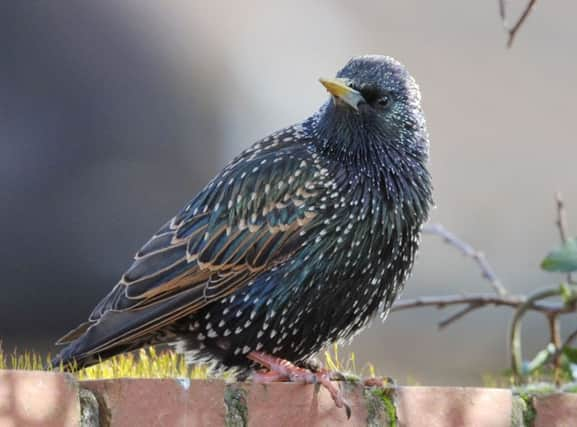Designer diets sow seeds of change in the garden


Outdoor visitors, too, are being attracted by exotic new types of sustenance – sometimes with the same sort of side effect.
The changing landscape of Britain’s back gardens, which has seen the numbers of traditional inhabitants like song thrushes, house sparrows and starlings decline rapidly in recent years, has also brought an influx of goldfinches and long tailed tits, tempted by “designer” bird food like African nyjer seeds, for which pet shops are charging £11 for a 5kg bag.
Advertisement
Hide AdAdvertisement
Hide AdThe trends have emerged as the RSPB launches its annual Big Garden Birdwatch, in which householders are invited to spend an hour between tomorrow and Monday doing a head-count of the birds on their lawns and flower beds.
The survey, the biggest “citizen science” wildlife project in the world, is now in its 40th year and has helped to track the movement of birds across changing climates and environments.
The charity says the increasing popularity of nyjer seeds in domestic bird feeders has helped goldfinches and long tailed tits fly into the list of Britain’s 10 most familiar birds.
It has also recorded increasing numbers of species such as wood pigeons and long tailed tits and influxes of bramblings and waxwings.
Advertisement
Hide AdAdvertisement
Hide AdBut at the same time, numbers of house sparrows have declined by 57 per cent during the last four decades – although their numbers appear to be recovering with a rise of around 17 per cent since 2009.
The survey was the first to flag up the decline in song thrushes, which were the seventh most commonly seen bird in 1979, but whose numbers had more than halved by 2009, with 13 other species overtaking them.
The popularity of new bird food has not been wholly positive. The thick outer coating of nyjer seeds from Ethiopia and Kenya – also known as Niger and thistle seed – can form a mess beneath feeders, sometimes choking grass and plants.
The RSPB hopes that with cold weather forecast over the weekend, more birds might head to gardens in search of food.
Advertisement
Hide AdAdvertisement
Hide AdThe results of the survey could also give some indications of the impact on populations of the “Beast from the East” storm last spring and the heatwave that followed.
Over the years, the project run by the RSPB has revealed the flagging fortunes of some of the UK’s most commonly seen garden birds, such as house sparrows, starlings and song thrushes.
Mike Clarke, the RSPB’s chief executive, said the survey had begun in the 1970s as a winter activity for children.
“Birdwatch participants have made a significant contribution to monitoring garden bird numbers over the past four decades,” he said.
Advertisement
Hide AdAdvertisement
Hide Ad“Those taking part work together as part of a community with thousands of other Big Garden Birdwatchers to help the RSPB’s work to protect birds, other wildlife and the places they live.”
“Reaching 40 years is a huge achievement and shows just how passionate people across the UK are about their wildlife.”
Participants this year are also being asked to watch for badgers, deer, foxes, grey and red squirrels.